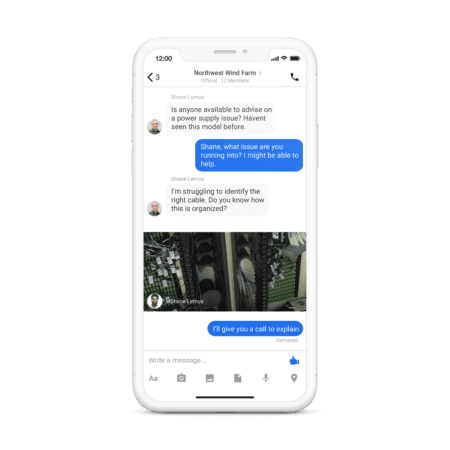For companies with field service teams, mobility is a necessity. Mobile technology has greatly enhanced field service work, with better ways to capture field data, streamline workflows, share information and solve customer problems in real time.
Technicians rely heavily on smartphones and tablets to access workflow and communication apps. These mobile devices are their only window into the business and are essential for job completion. Unlike office workers, field workers can’t simply turn to the person next to them for help. Whether they need to look up work order information or ask an expert technician for help, technology is the only way.
And while these devices bring so many benefits to the business, they can also be distracting and hurt field service productivity levels if not managed effectively.
3 Ways to Prevent Lowered Field Service Productivity
1. Optimize Your Operations Structure
Allowing technicians to focus on the task at hand is crucial. Structuring your field service operations so that office employees are responsible for prep work — such as pre-screening jobs and contacting customers to tell them when the technician will arrive — means technicians can work without interruptions from their mobile devices. With these workflows in place, technicians don’t waste time calling the customer when they could be on the road, nor will they risk their safety by multitasking while driving.
Depending on your organization’s workflow, there could be a few small adjustments that result in a big impact on the team’s ability to stay focused. For example, one company promoted their most experienced technicians to an office-based role where they act as an on-demand resource, ready to answer questions as they come in. This helped improve access to real-time answers as well as alleviated pressure from technicians who knew they could help but were tied up with the task at hand.
2. Consider Company-Sanctioned Devices vs. BYOD
All companies have to decide if they are going to provide mobile devices or let employees use personal devices for work.
With BYOD, the organization saves money and employees have the comfort of knowing how to use their device of choice. According to a Forbes study, 49 percent of employees say that they’re more productive when using their own device. On the other hand, BYOD requires IT to manage a chaotic mix of apps, services, and device types, making it difficult to ensure compliance and data security. And in terms of distractions, BYOD may mean employees will be much more susceptible to answering a friend’s text while on the job.
When it comes to company-sanctioned devices, the company has complete control from an IT perspective and employees are less distracted by social media notifications. However, employees may be reluctant to learn how to use a new device.
No matter which method you choose, encourage employees to set their devices up for minimal distractions, such as cleaning up the home screen and turning off push notifications for certain apps. Removing distractions improves field service productivity as well as the customer experience. No one wants to see their technician Facebook message friends while they are supposed to be fixing a cable.
3. Choose the Right Communication Technology
 When technicians are in the field, they are going to run into new challenges and will need to reach out to their teammates for help. Equipping employees will a real-time communication app is essential for driving productivity. From improved first-time fix and completion rates to boosted customer satisfaction, access to real-time communication drives important business metrics.
When technicians are in the field, they are going to run into new challenges and will need to reach out to their teammates for help. Equipping employees will a real-time communication app is essential for driving productivity. From improved first-time fix and completion rates to boosted customer satisfaction, access to real-time communication drives important business metrics.
But this is only possible when the application is purpose-built for field service with the ease of use and functionality that the industry requires. Technicians shouldn’t be spending all their time messaging and sharing GIFs with coworkers, they should be in the app when they need fast answers or to contact scheduling or their manager. For the majority of the day, they need to spend their time doing the actual work.
[Related Post: Does Real-Time Communication Impact Field Service Metrics?]
Embrace Mobility Without Compromise on Productivity
Mobility is a must in the field service industry and technology is only going to improve. Staying competitive requires service leaders to invest in new technology as well as invest in their workforce. At a time when 40 percent of employers have difficulty filling roles, creating a connected culture, focusing on employee engagement, and equipping employees with the tools and skills they need to succeed is crucial.
When looking to technology to improve productivity, following these three tips will ensure that your technicians’ mobile devices are a value-add, rather than a distraction.


Share this: